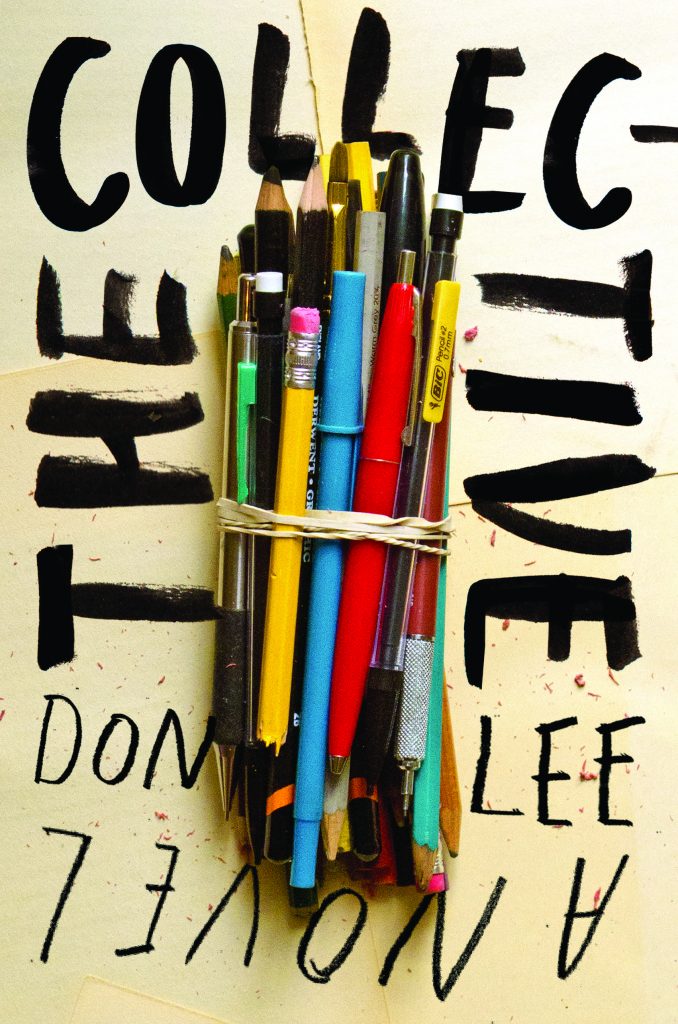It makes sense that a book centered on a white American woman in her fifties (Margot) and a white British man slightly younger (Quintin) wouldn’t have much to say on people of color. Or does it? In this exquisitely detailed, psychologically gripping account of #MeToo petitions and legal charges filed against the man, it turns out that Quintin’s wife (and daughter) are women of color. But it’s not clear at first if the “tear drop shaped” eyes of the biracial, Korean-Argentinean wife are merely intended as one among many kinds of ornamentation, or if the “anime eyes” of their Eurasian child, taking in the progress of the man’s fall, are meant to raise a larger question, of what impact #MeToo stories are having now on children watching the movement on the news, or a much simpler meaning is all that should be granted to these women of color, mother and daughter. Maybe they don’t signify anything beyond beauty, for Gaitskill, who uses these descriptions unironically, and without nods to the history of women and girls of color being exoticized.
Still, it is an accomplishment of this novella, that we aren’t quite sure how to feel – pity or vindication? about Quintin’s destruction by “that little bitch.” Though Quintin himself doesn’t ever use this phrase for Caitlin, a young white woman he fondled, or spanked, or some combination. He claims she “went along with it”, and even benefited from his mentorship, according to still-loyal Margot, his friend and a kind of “work-wife.” Yet reading this slim, condensed work, I increasingly came to feel that readers’ ambivalence about Quintin’s downfall, rather than straightforward dislike or contempt for this arguably empathic, loving man, rests somewhat on Gaitskill’s use of writers of color to designate her protagonist as “woke.” She emphasizes Quintin’s understanding that writers of color have talent and are well worth publishing. In this as in so much literary fiction peopled primarily by white protagonists, people of color, like the male black author his proud publisher Quintin brags is “marching for justice”, are accoutrements, markers that help Gaitskill quickly (in the short space of a novella) impart moral complexity to her clueless but deplorable harasser character.
Do people of color, including women of color among the victims, count for anything more than “things” viewed from the outside, in Gaitskill’s work? Noticed by a penetrating (white) gaze, to be sure, but all the same invisible. Reading this spry, insightful yet curiously, bizarrely also uninsightful novella – that never even asks once: “What was it like for people of color and queer people to interact with a man who made such enormously intrusive assumptions about what his subordinates wanted?” – I am reminded of Gilbert Ryle, a behaviorist who wrote, compellingly, about the difference between ‘knowing how’ and ‘knowing that.’
Gaitskill masterfully conveys how clearly she, as a novelist writing about #MeToo, knows “that” Quintin’s behavior is “unacceptable.” The character makes us uneasy from the first, his “empathy” unmasked quickly as cloying intrusiveness, his “wokeness” shallow. We are confronted, early on, with the sadism in bizarre acts that he describes in loving terms like hitting a woman with a paddle but then maintaining a close friendship with her, or grabbing her nipple without permission and feeling that the assault created affection between them, or encouraging her to share every salacious detail of a masturbation experience in texts that he’d “feel hurt” not receiving. The book illustrates that such behaviors cannot last, that the changes demanded (and wrought) by the #MeToo movement is irrevocable. Gaitskill makes Quintin all the more human and likeable by having him voice an awareness of inevitable progress, without being forced. Certain speeches seem meant to be impress us with his considerable empathy, like this one:
That this is the end of men like me. That they are angry at what’s happening in the country and in the government. They can’t strike at the king, so they go for the jester. They may not win now, but eventually they will. And who am I to stand in the way? I don’t want to stand in the way.
But Gaitskll’s generality is what makes the book so curiously absent any awareness of intersectional racism; how women of color and queer/ non-binary/ trans women might very well fear for the consequences of saying “no” in some fundamentally different and more daunting way than the white women ‘fear.’ In that way the novella is similar to the #MeToo movement as a whole, in its erasure of the voices of women of color in sparking and defining the movement, in the presumption by white women that they will form a ‘vanguard’ for the ‘eventual’ liberation of their less-enlightened non-white sisters ( #TaranaBurke).
When the invisibility and unacknowledgement of women of color in this novella is carefully considered, it then makes much more sense that numerous white women characters in Gaitskill’s novella are able to carry on intimate, confiding friendships with Quintin even in the aftermath of some heinously inappropriate act directed at them, like after he asks one female work colleague to tell him exactly how and when she likes to orgasm, or persuades another to let her take her shopping for sexy clothes. What Gaitskill fails to grasp, or show, is “how” harassment impacts specific groups of women, like women of color, differently. The casual persistence of his ‘friendships’ with the victims in the novella shows how shared whiteness between victim and perpetrator allows for the problematic, illegal introduction of sexual innuendo and sexual interest in the workplace to co-exist with identification, commiseration, even mutual professional respect. Quintin, with his overly touchy-grabby “empathy,” creates quasi-familial relationships with these white women – making them sisters, daughters, work wives by creating (what he describes as) bonds of affection. It’s not a coincidence, either, that at some level Quintin’s respect for his (white) female colleagues does seem believable. He is
not a man who hates or per se looks down on women. No more than he ‘hates’ writers of color. Insofar as these writers of color actually form part of his “brand,” he superficially celebrates difference, like admiring the paintings in the gallery where his black author’s book launch is being held, where white figures in famous paintings have been replaced “with famous people of color.” Writers of color, queer writers, are all part of his stable of “interestings” and exotics – “clever niche” writers, but with “quality.” People, like the paintings, he can “position” for the limelight.
His biracial wife and child, in this spirit, are “gorgeous.” The implication of Quintin’s “knowing that” (to use Ryle’s term) – knowing about discrimination, justice, even perhaps (from a distance) intersectional racism – is that it’s no surprise, how matter-of-factly he could marry a non-white woman, an heiress perhaps but one who still depends on him being able to generate a stable income, to have health insurance including for their daughter, only age eight when the #MeToo scandal breaks.
The knowledge of “how” diverse women suffer from his behavior is what Quintin lacks, but we don’t feel the emotional weight of this in the novella. Gaitskill never takes a single look at the impossibility of a woman of color even having a way to accept “friendly indignities” in the way a white woman, sharing in white privilege, perhaps (in some settings) possibly could. Many women of color editors, for example, have spoken out about daily, intense microaggressions and the tokenizing or targeting of their race. If weight already exists – to be compliant, “upbeat”, satisfied rather than angry or demanding – how much more weight is then created when an oblivious and self-serving, harassing white boss asks a female/ non-binary colleague to “take a few paddles, be a good sport”, or (as Quintin actually does) protests when she refuses to “share herself” with him, through physical contact. The crushing weight of this, the very real lack of the same number of opportunities women of color and non-binary women have in publishing (due to the 86% hegemony of white, straight women as the norm) – all reckoned with nowhere in Gaitskills’ narrative. It is worth noting too that other white women writers have been able to imagine their way into the specific marginalization and oppression experienced by women of color at the hands of white men – one novella-length example presented by A.S. Byatt’s “Art Work” in the Matisse Stories, where she deftly captures the marginalization of a black British woman artist by her extremely demeaning, verbally abusive, white British boss.
This is Pleasure is brilliant and accomplished, offering multiple craft lessons, on moving smoothly through time, incorporating ‘backstory’ with forward momentum, offering probing, incisive psychological insights into not only Quintin and Margot, but a whole host of other characters. There are moments that need to be read and re-read for their sheer emotional impact – like when Margot discloses her history of childhood sexual abuse, and Quintin, ever-more-disturbingly oblivious, opines that to her abuser, she was “generous,” an “angel,” by “letting” him.
Yet reaching the end of this book, the glaring absences profoundly disturbed me – the invisibility of the wife character of Carolina, despite her standing right in front of our faces. The biracial wife, held so distantly not only in Quintin’s gaze, but in the (presumed) white (likely female) reader’s. In the end, we’re asked to settle for that distant glimpse. Carolina’s erect back, the (generic) shouting episode, where she protests at how she has to prop things up. Her stoicism, strength. Echoes of a Western stereotype of Carolina’s Asian face as “mask-like”; her composure expected. The way she “bears” the burden his behavior has created, navigating all that they have lost, could lose, bearing it all competently (perhaps on “this bridge called our backs?”) But not a word that tells us either Gaitskill, or Quintin understand, or ever could understand, what it might be like to already be marginalized, and then be treated the way he treats many women. Nothing about how it feels for a man from a former imperialist nation to belittle a woman colleague who is descended from the same people his people (not that long ago) have ruled over. This absence, this omission in effect leaves us with a kind of silence, and silence, as we know before we ever read this book, has never equaled our consent.




